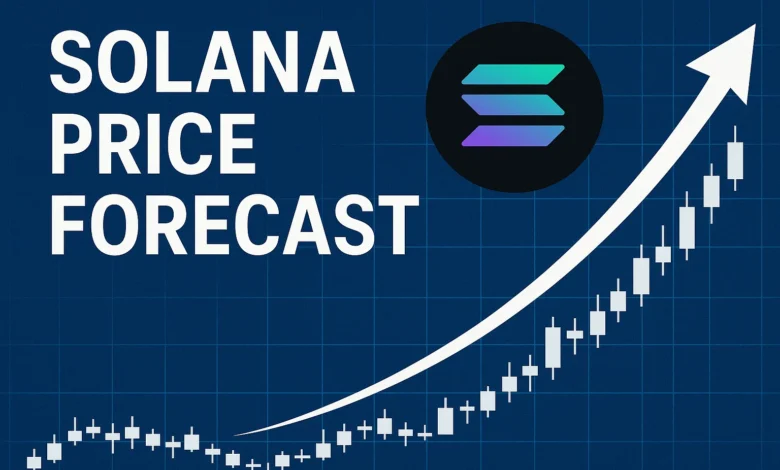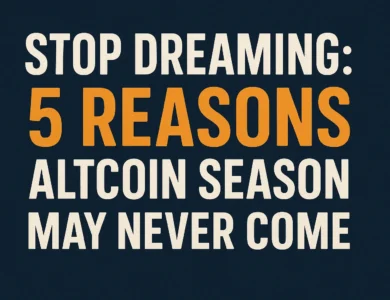
Solana’s latest downdraft to the $192 region has traders asking a familiar question: Is this another shakeout before the next leg higher, or the start of a more profound trend change? On October 17, 2025, live market dashboards showed SOL-USD swinging sharply, with intraday lows in the mid-$170s and a recent trade near the high-$180s—well below the $197–$208 range seen earlier in the day, underscoring rapid market volatility. Data from major exchanges captured a wide 24-hour low–high band (~$174–$198) and a clear break beneath the $200 psychological handle, which helps explain the tense tone across order books and derivatives desks.
While the immediate catalyst is whale selling—large holders repositioning into strength and seeding liquidity—context matters. Similar flows have cropped up several times this year, and they’ve often coincided with short, violent swings rather than long bear phases. Still, the message from whale activity is nuanced: when big wallets send coins to exchanges or move size on-chain, traders pay attention. Recent reporting documented multi-hundred-thousand SOL transfers and notable exchange deposits—classic signals of supply overhang that can cap rallies until absorbed.
Below, we dig into the Solana price forecast, key supports and resistances, and the structural reasons the network remains central to the 2025 crypto narrative—even as near-term action looks messy.
Why did SOL-USD slide under $200?
Price doesn’t move in a vacuum. Solana’s drop under $200 reflects a meeting point of liquidity, positioning, and sentiment:
Whale distribution into strength
Multiple outlets have tracked large Solana transactions—ranging from ~226,000 SOL to multi-million-SOL flows—moving toward exchanges or between whale wallets. These events typically front-run volatility: liquidity providers widen spreads; momentum traders flip bias; and funding rates normalize as perp longs back off. Even if every transfer isn’t a “sell,” the perception of supply can weigh on price until bids re-accumulate.
The psychology of round numbers
The $200 level is both a headline and a hinge. Once lost, stop-loss cascades and short-term systematic flows can extend the move. On October 17, a major venue showed SOL’s 24-hour range spanning roughly $174–$198, confirming that sub-$200 trade wasn’t a mere wick—it persisted long enough to alter intraday structure.
Derivatives and the “air pocket” effect
When perpetual futures positioning thins out, price can travel quickly between resting liquidity pools. Reports in October suggested reduced whale participation in perps, which can amplify intraday moves as less “smart money” depth allows retail and smaller funds to shoulder more of the order flow burden. That backdrop magnifies each whale transfer’s impact.
Solana price forecast: near-term levels that matter

Forecasting isn’t fortune-telling; it’s scenario mapping. For SOL-USD, the next 1–4 weeks likely hinge on how the price behaves around these zones:
Immediate support: $174–$180
Why it matters: This band captured the daily 24-hour low on October 17 across at least one large exchange readout. It also overlaps with prior consolidation from earlier in the quarter. A firm defense here implies absorption—buyers are willing to take the other side of whale-led supply. A clean break, however, invites a deeper visit to earlier demand zones in the mid-$160s to low-$170s, where spot inventories last re-accumulated.
Reclaim and hold $200–$205
Why it matters: The $200 threshold is the day’s pivotal battlefield and the psychological anchor for countless strategies. Reclaiming and holding above $200–$205 would indicate that the market absorbed supply, funding became balanced, and spot buyers are comfortable taking on risk again. In many crypto cycles, that sequence marks the “bear trap” resolution before higher highs.
Resistance at $208–$215, then $225
Why it matters: Intraday highs printed just under $198–$208, so the next test after $205 is convincing acceptance above that band. A daily close beyond $215 opens the path toward $225, where prior sellers often revisit the tape. Failure here keeps SOL-USD stuck in a wide range trade.
The whale question: signal or noise?
“Whale selling” headlines pack a punch, but not all flows are equal. Some transfers are internal shuffles, OTC settlements, or simple wallet hygiene. What we can say:
Exchange-directed flows are the loudest signal
Large transfers into exchanges historically correlate with near-term selling pressure; flows between cold wallets are murkier. Reports in recent months highlighted hundreds of thousands of SOL reaching exchanges, unnerving longs and encouraging countertrend scalps into weakness.
After the first hit, liquidity can heal fast
Crypto order books refill quickly. Post-transfer dips sometimes morph into V-shaped recoveries once market makers recalibrate spreads and basis traders re-enter. That’s why the Solana price forecast needs both flexibility and confirmation—react to price, don’t predict it blindly.
On-chain and fundamentals: why Solana still matters
Even as SOL-USD wobbles, Solana’s fundamental arc remains strong. A credible price forecast balances chart levels with network reality:
Throughput, clients, and resiliency
Solana’s push toward client diversity—with the Firedancer validator client on deck alongside Agave—targets performance and resilience. The network’s health communications in 2025 emphasized that a multi-client future reduces single-point-of-failure risk and improves decentralization dynamics—key for institutional comfort and long-run valuation.
Usage, TVL, and the 2025 DeFi cycle
Multiple reports through 2025 chronicled surging activity on Solana: higher DeFi TVL, brisk daily wallet counts, and low fees. While individual metrics vary by source and date, the multi-quarter trend is clear—developer traction and user throughput remain competitive. Such fundamentals set the floor for valuation during risk-off and improve upside optionality during risk-on.
Costs still matter
In choppy markets, transaction costs and finality shape user experience. Solana’s historical advantage on fees and speed keeps it attractive for NFTs, gaming, and DeFi flows—ecosystems that can return quickly once volatility stabilizes.
Technical structure: mapping the next moves
With SOL-USD reclaim attempts likely to revolve around $200, here’s how the technical map may evolve:
Scenario A — Bullish absorption and $225 retest
Trigger: A daily close back above $200–$205 with stable funding and narrowing basis.
Path: Momentum traders chase toward $208–$215, then test $225. If whale selling pauses and exchange inflows recede, the price could carve a higher low above $195, setting up a trend continuation toward the prior weekly supply.
Scenario B — Failed reclaim and range breakdown
Trigger: Rejections at $198–$205 while exchange inflows remain heavy.
Path: Another sweep of $174–$180 support. Lose that level on a closing basis, and the tape may explore $165–$170 for deeper liquidity and stop-hunt potential before buyers defend again.
Scenario C — Volatile chop within a broad band
Trigger: Mixed funding, uneven spot flows, and alternating whale headlines.
Path: Several days of rangebound trade between $180–$205, marked by sharp intraday moves and mean-reversion setups. For swing traders, patience and risk control trump conviction.
Risk factors that could skew any Solana price forecast

Macro shocks and the crypto complex
Crypto remains tightly tethered to global liquidity and rate expectations. A hawkish macro surprise or an exogenous risk event can mute otherwise bullish on-chain impulses and slam beta assets like SOL harder than BTC.
Regulatory headlines
Policy shifts, ETF approvals, or enforcement actions can flip the narrative in a headline. Over 2025, major policy announcements have occasionally triggered cross-market re-pricings within hours. Solana price is not immune to these regime changes.
Execution risk on upgrades
While Firedancer and related client work promise massive throughput and latency improvements, timelines and rollout risks always exist. Execution delays or unforeseen bugs can weigh on sentiment until resolved.
Trading and investing takeaways
Respect the range; let price prove it
The best Solana prediction is often the simplest: wait for confirmation. Above $205, momentum improves; below $180, caution rules. Inside that band, trade smaller, let the market tip its hand, and avoid over-exposure when whale-selling headlines crowd the tape.
Separate narrative from net flows
Not every significant transaction is a dump, and not every dump is trend-defining. On-chain monitors, exchange flow trackers, and funding curves can help distinguish supply shocks from noise. The more that exchange-bound flows recede, the sturdier any bounce becomes.
Fundamentals cushion, but don’t immunize
Solana’s throughput, low fees, and ecosystem momentum provide strong long-run underpinnings. But in the short run, beta + leverage still dominates. That’s why risk management—position sizing, stops, and time frame alignment—matters more than any single Solana price forecast.
Final Thoughts
SOL-USD sliding to about $192 and briefly below reflects classic crypto dynamics: whale selling, thin liquidity pockets, and round-number gravity at $200. The near-term outlook pivots on whether buyers can reclaim and hold over the $200–$205 band and neutralize exchange-bound whale supply. Structurally, Solana remains well-positioned: client diversification, robust throughput, and sticky developer activity continue to anchor the bull case into 2026—even if the next few sessions demand patience and discipline.
Read More: Solana Price Prediction for 2025–2031: investor guide
FAQs
Q: Is whale selling consistently bearish for the Solana price?
Not necessarily. Whale transfers can be bearish if coins are headed to exchanges and promptly sold, but some flows are internal moves or OTC settlements. The signal strength rises when on-chain trackers and exchange wallets show net inflows plus soft order books. Context and follow-through matter more than the headline.
Q: What are the key support and resistance levels after SOL-USD dipped to $192?
In late-day New York on October 17, a major venue showed a 24-hour low around the mid-$170s and a high near the high-$190s, placing $174–$180 as immediate support and $200–$205 as pivotal resistance. Above that, $208–$215 and $225 are the following logical checkpoints.
Q: How do Solana’s fundamentals affect the price forecast?
Network throughput, client diversity (e.g., Firedancer), and ecosystem growth buttress the long-term thesis. These pillars don’t cancel short-term volatility, but they can improve recovery speed once sellers are absorbed, supporting higher valuation over multi-quarter horizons.
Q: Could derivatives positioning amplify the next move?
Yes. If perp positioning stays light—or concentrated the wrong way—small net flows can produce outsized moves. Reports this month pointed to softer whale presence in perps, which can widen ranges and accelerate moves between liquidity pools.
Q: What would invalidate a bullish Solana prediction near term?
A failure to reclaim $200–$205, persistent exchange inflows from whales, and a daily close below $174–$180 would collectively argue for caution and raise the odds of a deeper range breakdown toward the high-$160s. Conversely, a decisive hold back above $205 would reopen attempts at $208–$215 and $225.






